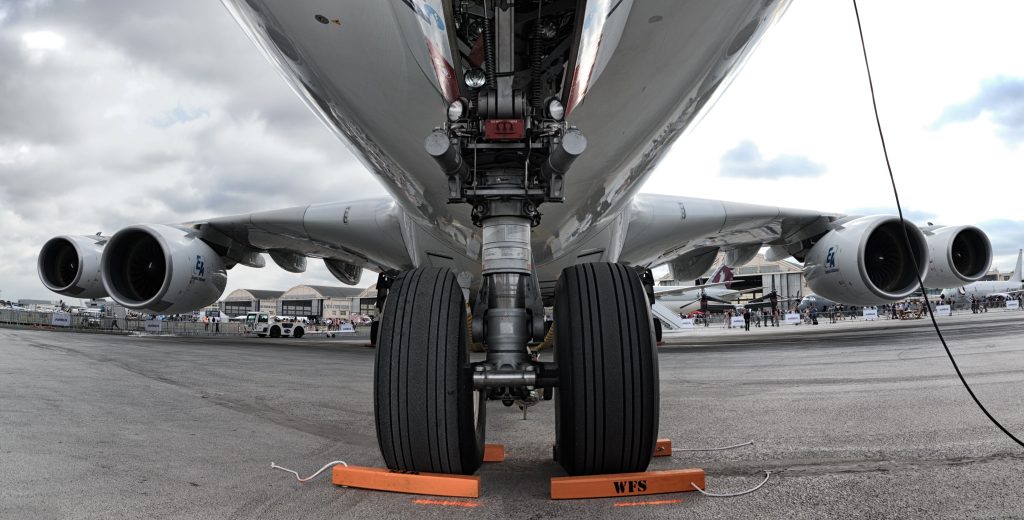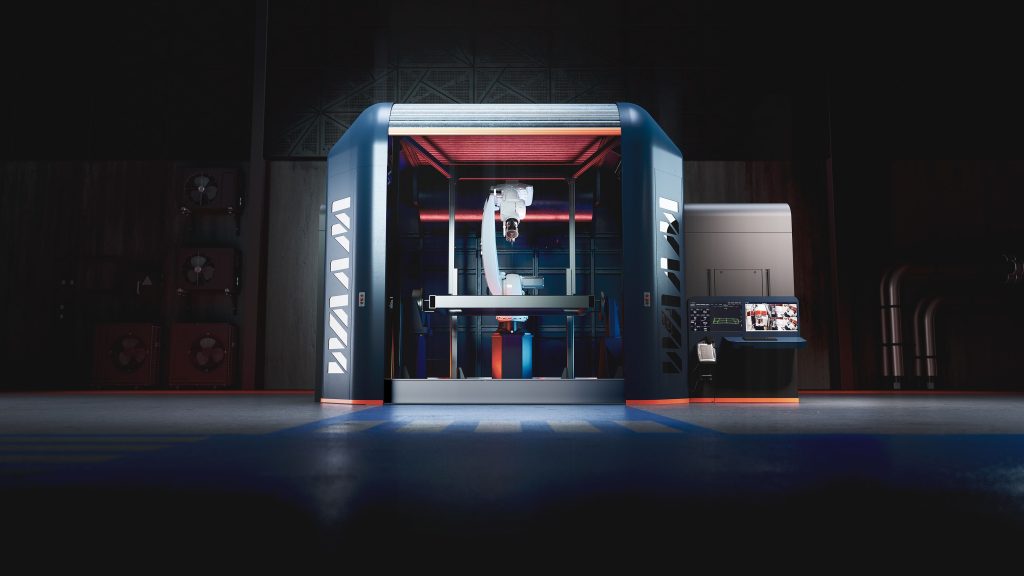Nominate now for the 3D Printing Industry Awards 2023.
A new academic-industrial partnership has been launched to develop lower-emission airplane landing gear components, with a view to growing the UK’s global aerospace market share.
The £22.5m project, called I-Break (Landing Gear Industrial Breakthroughs), is a collaboration between global aircraft OEM Airbus, Cranfield University spin-out WAAM3D, and 14 other partners including small businesses, academics, and research organizations.
The project will develop and manufacture key landing gear structural components, traditionally produced using large forgings, with novel techniques including additive manufacturing. Powder hot isostatic pressing and composite technology will also be leveraged in the project, which seeks to reduce aircraft time to market and reduce the industrial CO2 footprint by 30%.
Delivered through the Aerospace Technology Institute (ATI) Programme, the project is being funded by a larger £218m UK government initiative for R&D aerospace projects. The UK government’s joint commitment with industry to invest in new aircraft and manufacturing technologies is expected to secure at least £20bn additional private investment in aerospace in the UK, supporting over 100,000 jobs.
“The investment through the ATI Programme that the Industry Minister, Nusrat Ghani announced at the Paris Air Show will support a range of world-class research projects in technologies to improve the sustainability of aerospace, from new design processes to new materials,” commented Aerospace Technology Institute CEO Gary Elliott.
The I-Break project is set to be completed in 2026.

WAAM3D and the I-Break project
WAAM3D’s role within the the I-Break project centers around the industrialization of higher productivity Wire Arc Additive Manufacture (WAAM) variants. The control of microstructure and mechanical properties for high-integrity structural applications, and the industrialization of on-line non-destructive-testing techniques will also be headed by WAAM3D. The company will also leverage its upgraded RoboWAAM systems to produce demonstrator parts of relevant size and complexity.
Several packages are included within the I-Break project, with various partners collaborating within each package. One such partner within WAAM3D’s package is Bedfordshire based Cranfield University, which will work on novel WAAM processes and solutions, and on the validation of new alloys of key interest.
The University of Strathclyde is also collaborating directly with WAAM3D. The university, home to 23,000 students from 10,00 countries, is working on innovative on-line non-destructive-testing techniques. Moreover, Peak NDT, a world-leading designer and manufacturer of high-performance conventional and phased-array ultrasonic instrumentation, is also developing on-line non-destructive-testing hardware systems.

3D printing airplane parts
Whilst the I-Break project is breaking new ground within the UK’s manufacturing industry, it is not the first time additive manufacturing technology has been used to produce airplane landing gear.
Back in 2021, it was announced that German 3D printer manufacturer SLM Solutions had collaborated with aviation specialist Safran Landing Systems to 3D print a novel business jet landing gear component. Safran deployed SLM Solutions’ Selective Laser Melting (SLM) technology to produce the large-format nose piece that was 15% lighter than allowed by conventional forging.
Using an SLM 800 3D printer, Safran was able to accelerate the parts qualification process, rapidly testing different prototype iterations and identifying its optimal design in a matter of days. Once completed, the 3D printed landing gear nose piece measured 455 x 295 x 805 mm and featured a range of mechanical properties such as high durability, and natural resistance to corrosion without requiring surface treatment.
Away from landing gear, US aerospace manufacturer Boom Supersonic announced a partnership last year with 3D printing OEM GE Additive to develop the Symphony engine for its 1,300 mph Overture supersonic airliner. Through this collaboration, GE Additive offered advice around the build process of the engine, and also looked to identify opportunities to incorporate 3D printing into the process.
GE Additive’s AddWorks consultancy has also recently worked with Boston-based ultra-quiet vertical flight system developer MagLev Aero to aid in the development of its proprietary MagLev HyperDrive aero propulsion platform for electric vertical take-off and landing (eVTOL) aircraft.
Subscribe to the 3D Printing Industry newsletter to keep up to date with the latest 3D printing news. You can also follow us on Twitter, like our Facebook page, and subscribe to the 3D Printing Industry Youtube channel to access more exclusive content.
Are you interested in working in the additive manufacturing industry? Visit 3D Printing Jobs to view a selection of available roles and kickstart your career.
Featured image shows the nose landing gear on an Airbus A380 passenger plane. Photo via 4CM.


